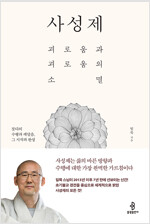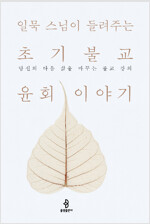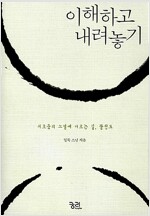(3) Facebook

Abhidhammattha Sangaha
. After the Buddha's death, there have been a few councils among about 500 persons who were known to have a good memory and who were either the immediate disciples of the Buddha or the 'grandchildren' generation disciples. Comparing one another's memory of what the Buddha said, they confirmed the content, which they put into the form of verse. And thousands and thousands people kept reciting it together until it was written down later in the Pali language. (In order to make sure that there is no mistake or distortion, they recited it forwards, backwards, skipping every other word, skipping every third word, etc..) This is called the Tipitaka or Three Baskets: the Vinaya (discipline); the Sūttas (the scriptures of the Buddha's discourses); the Abhidhamma (the comprehensive overview of the entire system of the Buddha's teachings). For example, if a sutta says that A lives on the left side of B's house and another sutta says that C lives on the right side of B's house, then we can infer from these suttas that those three houses must be aligned in the order of 'A - B - C' - although there may or may not be other houses between A and B or between B and C. As far as I understand, this is what Abhidhamma is about; it is the product of Buddhist monks' collective effort to represent the entire system of the Buddha's teachings in a comprehensive way. But the Abhidhamma alone is already so voluminous that we need a blueprint or compendium of the Abhidhamma, and the most renowned book written for this purpose is the Abhidhammattha Sangaha by Anuruddha around 11th century. I do NOT take at face value the myth that the Buddha went up to a higher realm to teach Abhidhamma after he got awakened. However, I still personally find that Abhidhamma is worth studying just to get an overview of the bigger picture - only as a subsidiary material to the early suttas. All we have to remember is that Abhidhamma is like a reconstruction of or the commentaries on the early suttas and that there may or may not be other houses between A and B or between B and C. No matter whether you decide to study Abhidhamma or not, the suttas in the Tipitaka must always be at the core of the Buddhist practice or study. While spreading all over the world for 2400 years, the Buddha's teachings have been interpreted, re-interpreted and re-created by numerous persons in order to appeal to the local culture, and the result was many new 'suttas'. However, in those later suttas, the phrase "The Buddha said as follows" was used as a figurative measure, not as a record of what has indeed happened. With most readers not knowing about this history, no wonder we find so many contradictions between the early suttas in the Tipitaka and the later suttas, which did not go through such collective confirmation process being written. Thus, as long as you suppose that Buddhism should not contradict Siddhārtha Gautama, you should always keep only the early suttas in the Tipitaka as your reference point, in which the phrase "The Buddha said as follows" can be taken literally. (Theravada is the name for the school which recognizes only the Tipitaka as the Buddha's teachings.) .
[ Bhikkhu Bodhi's Lecture and Book ]
The Theravada Abhidhamma with Bhikkhu Bodhi 2018
10 videos

A Comprehensive Manual of Abhidhamma: The Abhidhammattha Sangaha of Acariya Anuruddha Paperback – May 29, 2020
by Bhikkhu Bodhi (Author), Mahāthera Nārada (Translator)
5.0 out of 5 stars 1 rating
Kindle from $6.99
This modern translation of the Abhidhammattha Sangaha (Manual of Abhidhamma) offers an introduction to Buddhism's fundamental philosophical psychology. Originally written in the 11th or 12th century, the Sangaha has served as the key to wisdom held in the Abhidhamma. Concisely surveyed are Abhidhamma's central themes, including states of consciousness and mental factors, the functions and processes of the mind, the material world, dependent arising, and the methods and stages of meditation. This presents an exact translation of the Sangaha alongside the original Pali text. A detailed, explanatory guide with more than 40 charts and tables lead readers through the complexities of Adhidhamma. (Note: This title was previously published under ISBN 9781928706021. Due to technical issues a new ISBN had to be assigned. Rest assured that both versions of this title are exactly the same.)
[ 일묵스님의 강의 ]
[ 각묵스님의 강의와 번역본 ] https://www.youtube.com/playlist?list=PLIy6GzLbkgsRBnDjMxLKfMTEBAZpFq08j
https://www.aladin.co.kr/search/wsearchresult.aspx?SearchTarget=Book&SearchWord=%BE%C6%BA%F1%B4%E3%B8%B6+%B1%E6%B6%F3%C0%E2%C0%CC+%B0%A2%B9%AC&x=0&y=0
.
|
| |||||||||
12 posts · 42 items ·
1 contributor
希修 added a new photo.
gaetin2oe0 SponsFielorbrecuutardy ·

希修 added 7 new photos.
18a NineotiSogpveeimboenser o2rael0Se1gdgS9l ·





+3
希修 updated her status.
希修 added a new photo.
tauihS2hh gNpovoemmnbeSsrrco 2ur0S19ehodn ·
< '마음 공부' = '생각 공부' >
.
운명을 보완/극복하는 유일한 방법인 '마음 다스리기'라는 건, '착하게 살기'가 아니라 결국 '생각 다스리기'. 배우자에 대한 '서운함'이라는 감정 A도 실은 '배우자는 나에게 이렇게 저렇게 해 주어야 한다'라는 나의 전제=생각 B에 기반하여 일어나는 것이기에. (그래서 불교에서 '마음'이라는 단어는, '정서' 자체보다 정서까지 포함하는 '인지'/'의식'을 의미.)
.…
See more


Kihwan Lee
생각엔 능동적으로 하는것과 수동적으로 일어나는게 있는것 같지요. 두개를 잘 구분해서 생각의 숲을 헤쳐서 잘 끌고 나가는게 중요한것 같습니다.
2
希修 added 5 new photos.
tauihS2hh8g pOcotmonbeSsrrco 2ur0S19ehodn ·





希修 added 11 new photos.
tauihS2hh5g pOcotmonbeSsrrco 2ur0S19ehodn ·




+7
希修 added 6 new photos.
tauihS1hh1g pOcotmonbeSsrrco 2ur0S19ehodn ·





+2
--
--


 (
(



 (
(
